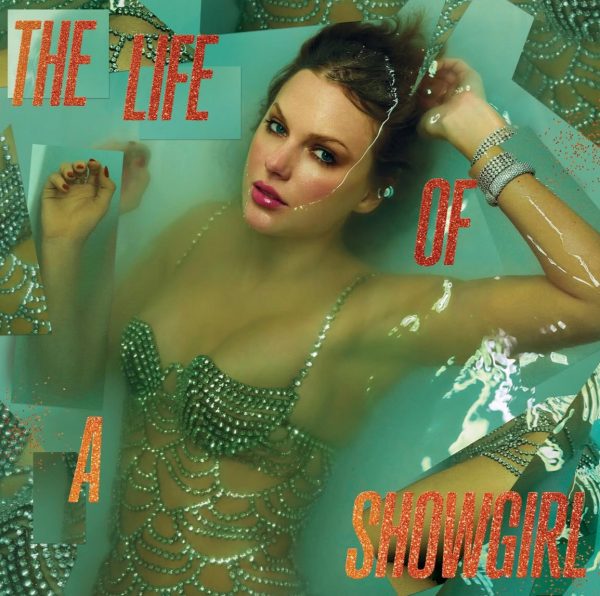Childish Gambino’s Final Album “3.15.20” Is a Time-Stopping Spectacle
Many of us have feared the day Donald Glover, also known as Childish Gambino, would release his final album. Gambino’s musical persona has pushed boundaries in the music industry for 15 years, and while “3.15.20” is his final creation, its many layers will keep the album compelling for years to come.
Gambino’s final album illustrates his artistic capacity through a variety of miscellaneous tracks that require a full dissection. Gambino’s production has come just at the right time. This album gave us a chance to halt our rushing minds, which chase the COVID-19 pandemic’s constant news updates, and pull out of the discouraging slump in which we may find ourselves. In our own isolation, Gambino’s album creates an experience that refuses to be listened to passively. However, while we crave music the most in this time of confusion, Gambino’s production provides anything but clarity.
The timestamped titles are the first element of the album that pushes us out of our comfort zone. They represent the concept of time that Gambino plays with throughout the album. The songs are placed in a chaotic order, which gives no structure to the album and forces the listener to choose a song at random. Many of us will recognize “Feels Like Summer,” which is secretly disguised as “42.26.” This song may be the only track to bring us a sense of familiarity, as it was released in 2018 and is one of Gambino’s hit songs. However, it sits unmarked beside 11 other songs, each distinctively different from the next.
While time is already a perplexing idea, there are instances where Gambino can make sense of its complexity. “19.10” takes me to the ’80s. It is funky, groovy and makes me want to dance. “Algorythm” feels more the ’90s. It feels more haunting, but if anything, this intensifies the groove. The timestamps denature the label of being a “song” and represent the track as what it really is: a moment in space. This album is not composed of songs: it’s a collection of moments and feelings.
Outside of singing, Glover is an actor, comedian and director, all of which are made apparent throughout his music. We see glimpses of his humor when he throws in strange sound effects and obscure drug references, and the expressive nature of each track projects his acting capabilities. Glover’s character of Childish Gambino has completely remodeled the medium of music. When I saw Gambino live last summer, it was more than just a concert — it was an experience. He finds a way to incorporate comedy, political tragedies and, above all, rhythm into his music. In an age where rap is shifting away from the soul and towards the mundane, Gambino is refreshingly animating the genre.
In some ways, Gambino’s “3.15.20” can be compared to a modernized, R&B version of Pink Floyd’s “The Dark Side of the Moon.” The two albums transform the depth of music. They are pieces of art, intended to be admired from every angle. While “The Dark Side of the Moon” can be appreciated the first time it is played, its meaning continues to grow with every play after. It requires an attentiveness. Additionally, “The Dark Side of the Moon” uses segues that cause two songs to be indistinguishable from one another, as their endings fade into beginnings.
Gambino implements this same segue technique as he transitions from “Algorythm” into “Time.” The songs lead fluidly to the next through a series of intense beats, carrying us to the new track effortlessly. The segue is minorly implemented in other tracks, but not in an anticipated way. The beat seems to sneak up at the end of the song just in time for the new one to start. Through this sharpness in transition, Gambino reinforces the sharpness of time and adds discomfort for the listener as they feel the tempo and dynamics suddenly shift. Some tracks, such as “24.19,” seem to shift even midway through the song.
While the tracks each carry their own charm, they always include fragments of Gambino’s personality. “12.38” begins with the funk that makes Gambino so recognizable. He includes references to drugs in an almost comedic way. Randomness spews from this song as Gambino shifts from colors to omelets to the police. On the surface, the song has a great beat and rhythm, but the lyrics add a unique and confusing complexity to the song. Pieces of the album made me question what music really means for Gambino. His album is not just a mix of songs; it includes weird sound effects, all strangely disguised in a rhythmic melody. The end of “32.22” is filled with noises of cows, birds and cats, then suddenly shifts to “35.21,” an uplifting and exciting song. Gambino’s strange personality manifests its way into the album and makes for a confusing yet entertaining experience.
As heartbreaking as it is to know that “3.15.20” is Gambino’s last piece of work, I expect it is an album that will never expire. Like a puzzle, this album will take effort and thought for it to ever feel complete. We see the songs as only small pieces of a larger project Childish Gambino has left for us to assemble. Through the thought-provoking lyrics, strange transitions and hidden laughs, Donald Glover has left us with the ultimate gift to remember his musical alter ego.












































































































































































































